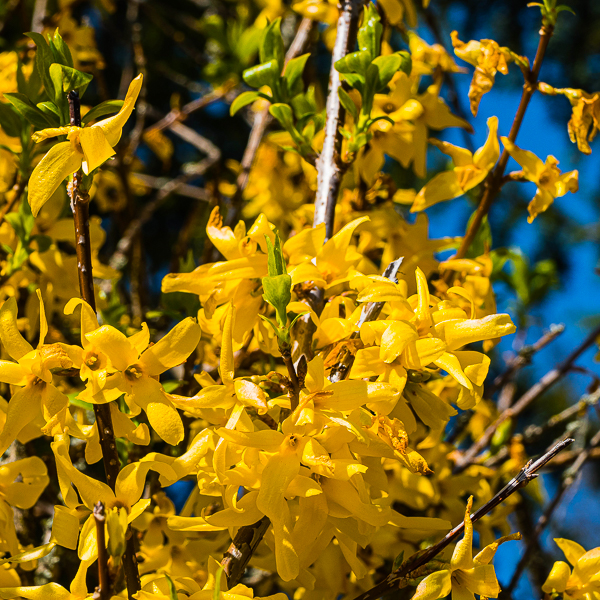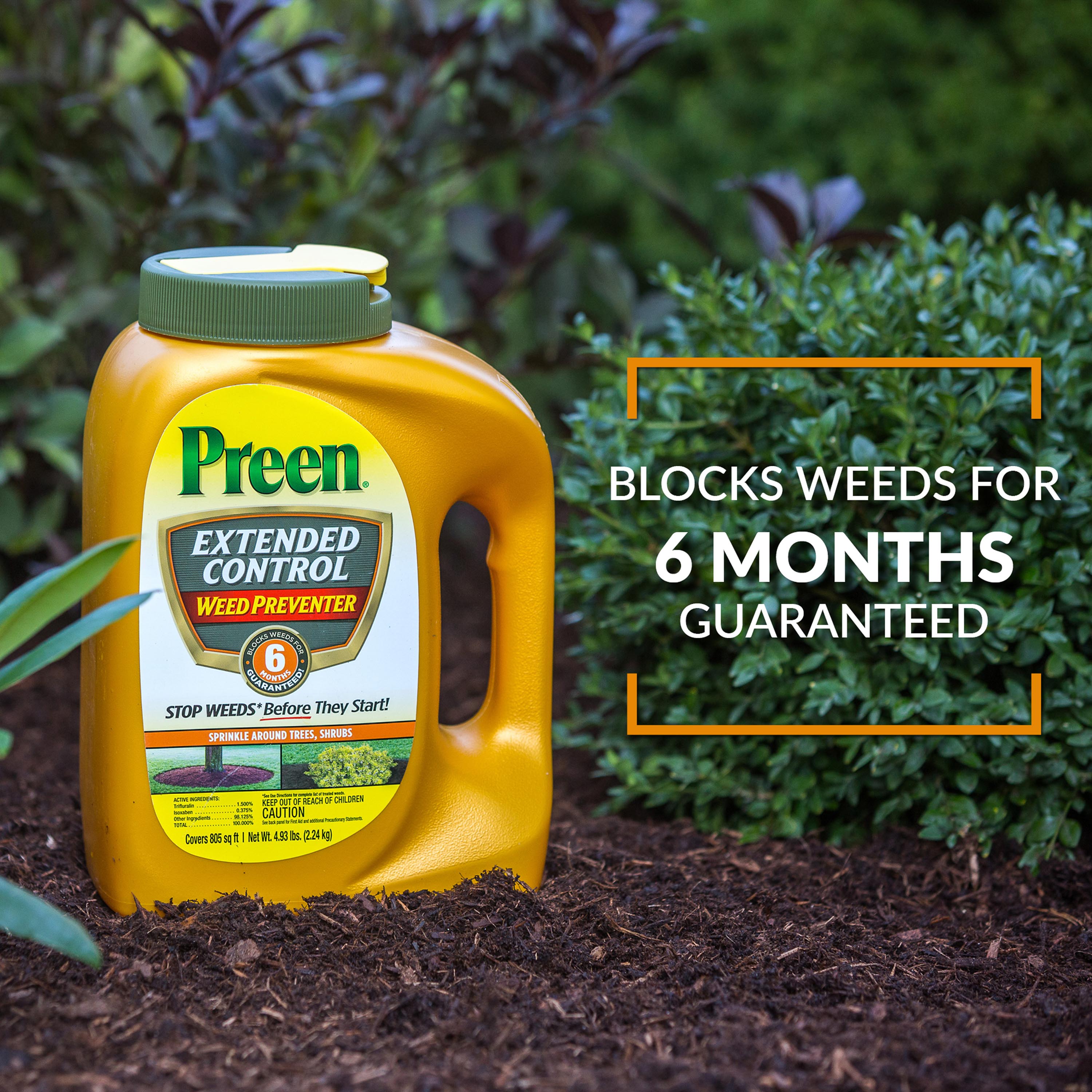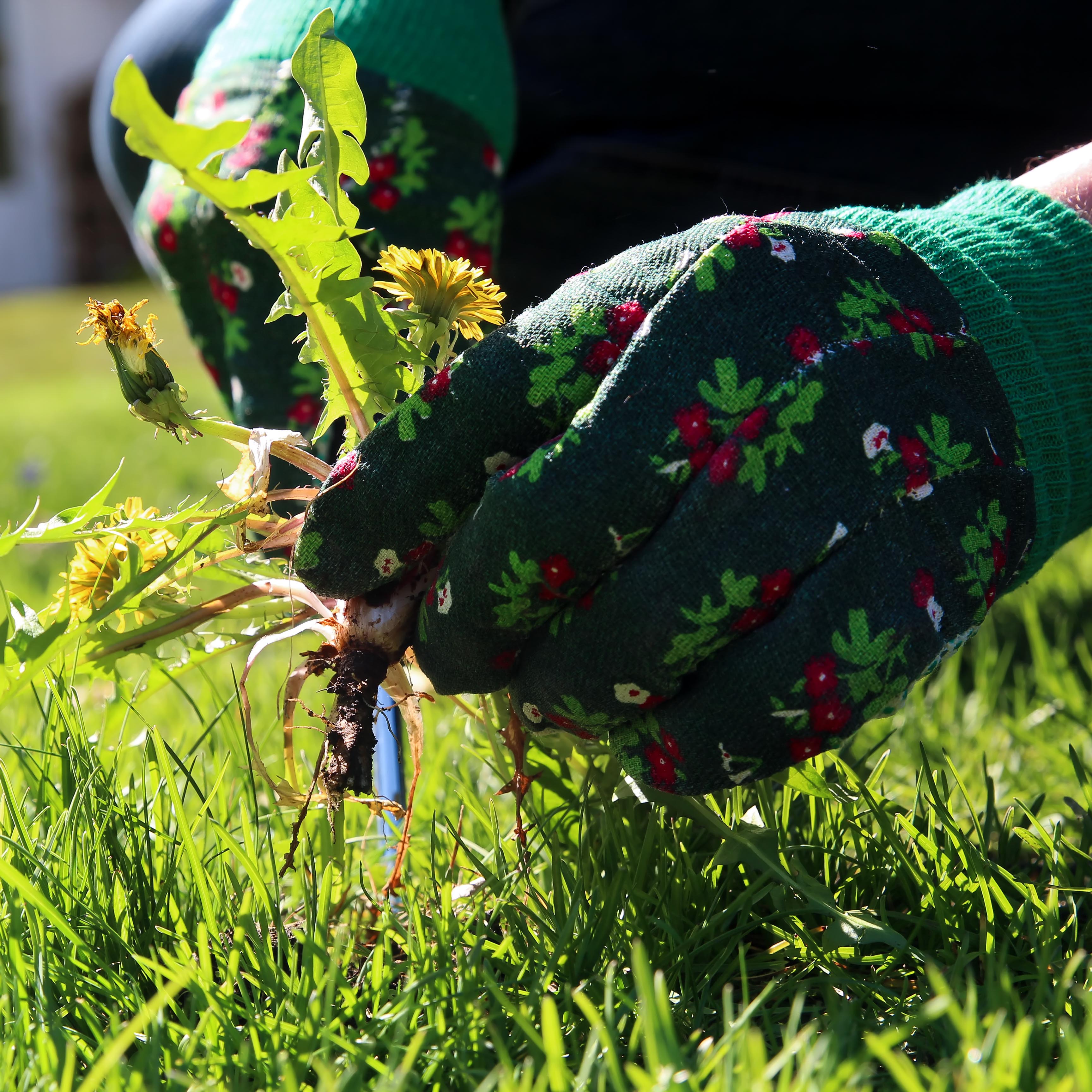How it Works: Preen Garden Weed Preventers
Here's how our Garden Weed Preventers prevent weeds before they even sprout rather than killing them after they’ve already had the chance to grow.
Beating the weeds is no easy chore. The real task is stopping the seeds from germinating. Read more on how to stop the seeds from spreading in your lawn or garden.
March is a month that brings new life to the landscape as warming temperatures trigger the season’s first leaves and flowers. But those longer days also warm the soil enough to trigger growth that gardeners don’t want – the year’s first big surge of new weeds.
Scores of weeds begin sprouting when daytime temperatures regularly hit 50 degrees.
One of the best cool-climate indicators that new weeds are on the way is when forsythia bushes bloom. These showy, yellow-flowering shrubs are one of the season’s first plants to bloom, sometimes opening even before winter is checked off the calendar.
This is the seasonal cue that it is time to apply Preen Weed Preventers to stop weeds before they get started so you can avoid the labor and expense of pulling, digging, or removing them later.

Pusteflower9024 / iStock / via Getty Images
When you venture out into the yard at winter’s end, you might notice that some weeds are already growing in your lawn and garden beds that weren’t there last fall.
These are most likely winter annual weeds such as chickweed, henbit, speedwell, and dead nettle that sprouted in cold weather. The way to prevent them is by applying a treatment of Preen Extended Control Weed Preventer in the fall that lasts up to 6 months providing you coverage into the early spring.
Read more on controlling weeds in fall and winter

Preen won’t kill those weeds now, and it also won’t kill existing perennial weeds that you might see starting to grow from last year’s roots.
What an early-spring application of Preen does is prevent the germination of more than 100 varieties of weeds that otherwise would sprout between now and early summer, including dandelions, field bindweed, white clover, pigweed, purslane, Carolina geranium, oxalis, spurge, and lambs quarters.
The original Preen Garden Weed Preventer prevents weed-sprouting for up to three months, and Preen Extended Control Weed Preventer prevents weeds for up to six months.
The first step in winning the weed battle is clearing out those existing weeds. Pulling and/or digging is the most immediate, effective control. Just be sure to get roots and all or else many weeds will simply sprout new leaves from the roots left behind.
If pulling isn’t a doable option, weeds in the lawn can be spot-sprayed now and throughout summer with a liquid broadleaf weed-killer formulated for use in lawns. These kill most broadleaf weeds without harming the grass.
Weeds in garden beds, patio cracks, and pathways can be zapped with non-selective chemical herbicides or with “organic” sprays containing acetic acid, citrus oil, citric acid, or clove oil. Note that these kill grass and grassy weeds along with broadleaf weeds and plants.

Pulling dandelions from the yard. Saklakova / iStock / via Getty Images
Next, cover any soil that isn’t already plant-covered with a one- to three-inch layer of organic mulch, such as wood chips, bark, shredded hardwood, partially decomposed leaves, or pine needles. Bare soil is an invitation for new weeds.
The third step is applying a granular Preen Weed Preventer, which is best scattered over mulched beds or existing plants and then lightly watered in.
Preen is safe to use over more than 600 types of garden plants. Check the label to make sure yours are on the list.
Preen Mulch with Extended Control Weed Preventer combines the extended weed preventer with mulch for those starting with bare soil.
Preen Lawn Crabgrass Control is a granular preventer geared to control crabgrass and more than 40 other common weeds in the lawn.
Reapply Preen Weed Preventers once or twice more during the year according to label recommendations for season-long weed prevention.